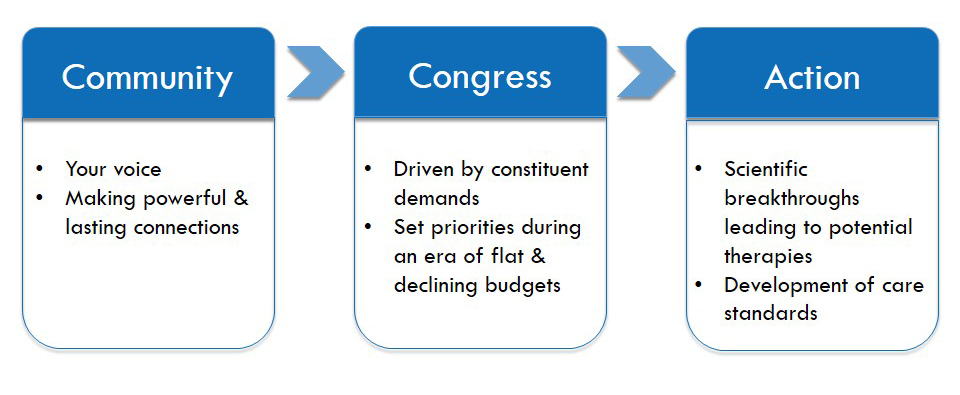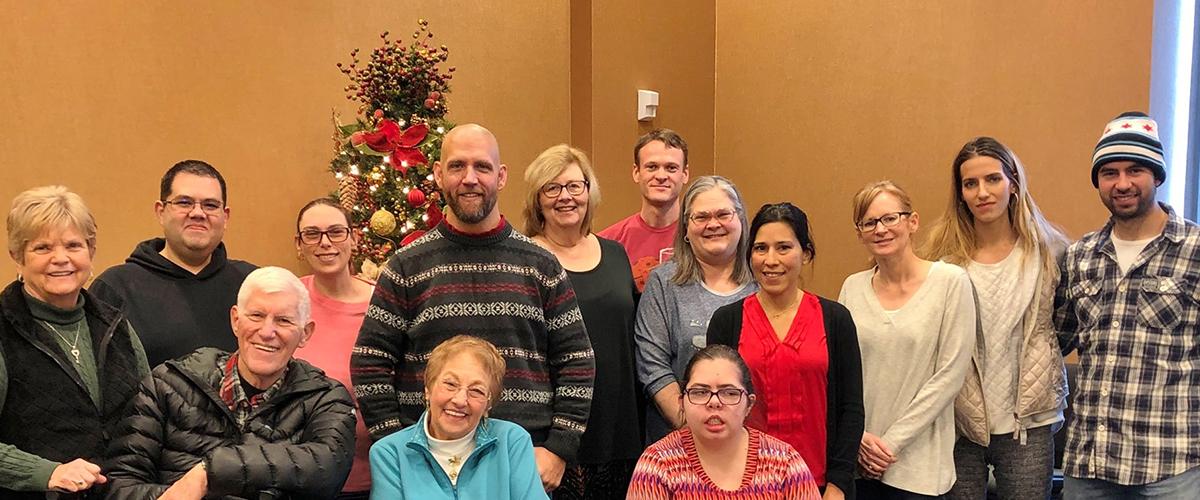
Watch our MDF Advocacy Training webinar for an introduction to grassroots advocacy.
Grassroots advocacy is citizen participation in government. The key to successful advocacy is assembling people who share common goals and concerns. Advocacy is all about educating legislators about the opinions and views of their voting constituents.
Why should I become an advocate?
You have the most powerful tool available on Capitol Hill: your vote. YOU have the ability to hold your legislators accountable to you as their constituent. Without hearing from you, your legislator does not know what is important to you, or to the DM community as a whole. Your recommendation may be the deciding factor in a member's decision to vote for or against specific legislation. You can make a difference!
Can one person really influence Congress?
Absolutely! Many do not realize that Congress is a reactionary body. The voice of a constituency is what causes changes to the current conditions in government: when a citizenry assembles with a collective purpose and singular voice, the system will respond to it.
The following is a brief description of the two chambers of Congress and what their functions are:
House of Representatives
The lower body of the Congress. House members are elected to represent a geographic Congressional district for two-year terms. The US House, with 435 voting members and five nonvoting delegates, is much larger than the Senate, with 100 voting members. The number of representatives each state has is dependent upon the state's population, and can change every 10 years based on the results of the US Census. The House is seen as the more personal branch, as House Members have smaller constituencies and are the direct link to the Congress of the United States. House Members consider bills based on how they will affect the constituents in their districts.
The House's most powerful function is presenting all spending bills or appropriations. This power starts in the House, but needs to be agreed upon in the Senate for these bills to pass.
Senate
The upper body of the Congress. Each state has two US Senators elected at-large, to serve six-year terms, with one-third of the seats up for re-election every two years. Senators are less inclined to vote on short term passions of a smaller constituency in their state, due to the fact that they are more insulated and hold the seat for six years.
The Senate's most powerful functions include providing advice and consent to the President on foreign policy matters such as war, and on political appointments such as judges.
Dividing Congress into two chambers was part of the Founders' intent to implement checks and balances in the government, requiring a positive vote of both sides to approve legislation. By designing differences into both the House and the Senate, the founders assured that legislation would be carefully considered in both the short and long term.
Source: Parent Project Muscular Dystrophy
For more information on the 21st Century Cures Act, please visit the advocacy page on the Myotonic website.
- Idea for bill is generated
- Bill is written, sponsored & introduced
- Bill referred to committee for further action
- Public hearings occur
- Expert testimony occurs
- Markup occurs
- Bill reported favorably, unfavorably, or tabled by committee
- Bill moves to House or Senate floor for debate & voting
- Approved bill moves to other chamber for same process
- Both chambers meet to reconcile bill differences
- Majority of both chambers must approve revisions
- Passed bill is sent to President to veto or sign into law!

